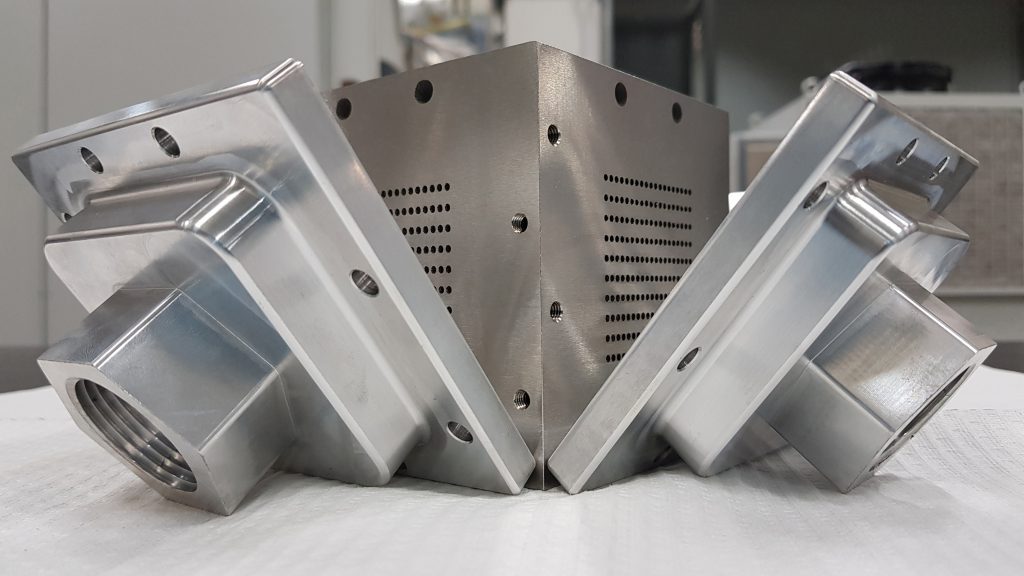Carl Zeiss (ZEISS), a manufacturer of optical systems, has announced a research partnership with two Brazil-based organizations aimed at advancing the use of metal additive manufacturing in the country’s oil and gas industry.
Since January of 2021, the company has been working with non-profit research and technology organization SENAI and energy firm Petróleo Brasileiro (Petrobras). Together, the research group has started developing and validating new 3D printing methodologies for critical oil and gas components – a project which is expected to last another two years.
Specifically, the research focuses on the evaluation of laser powder bed fusion (PBF) and laser-based directed energy deposition (DED), two 3D printing technologies that already see extensive use in the sector.

Metal 3D printing in oil and gas
Metal 3D printing technologies (DED in particular) provide a whole host of benefits to heavy industries like oil and gas. With lead times for certain traditionally manufactured parts stretching into multiple months, on-demand 3D printing can be a lifeline for tight project schedules, cutting production times of parts such as valves, flanges, and heat exchangers down to just weeks. The use of additive manufacturing also enables companies to repair existing components, which is impossible using traditional production techniques.
With more localized digital manufacturing networks, the logistical costs associated with part transportation and storage can also be significantly slashed. This bolsters profits for energy firms, while also reducing the overall carbon footprint of supply chains.
However, according to Dr. Edson Costa Santos, Senior Application Development Manager at ZEISS, oil and gas parts can only be 3D printed economically if there is “a precise understanding of powder aging and the influence of powder degradation on defects in the final parts.”
Disrupting the Brazilian oil and gas sector
The research project will see the partners using a multiscale, multitool computed tomography approach to develop new 3D printing process parameters for oil and gas components. The organizations hope to eventually gain a better understanding of the effects of powder aging and degradation, and how these factors influence a material’s suitability for end-use energy applications.
ZEISS, SENAI, and Petrobras have already laid out a jointly-defined roadmap for the work. Firstly, the international team will select a set of high-value and critical components to be 3D printed; this set will comprise both on- and off-shore parts. Then, the partners will select a set of appropriate raw materials for the 3D printed parts, which will be characterized for their processability, recyclability, and traceability.
The penultimate step involves developing and optimizing process parameters for these metal powders using a “new and robust” experimental method. This will ensure the materials are compatible with both PBF and DED, and the selected oil and gas components will be 3D printed. Finally, the 3D printed parts will undergo mechanical, wear, and non-destructive testing to qualify them for end-use.
ZEISS and its partners hope to achieve measurable results in the Brazilian 3D printing market by 2023, with hopes that the work will positively impact the country’s oil and gas supply chains in the long term.

In a similar vein, oil and gas firm Vallourec recently broke new ground in the offshore equipment manufacturing sector by designing and 3D printing a safety-critical water bushing component for the very first time. Designed for French oil major Total, the part is reportedly the first ever pressure-containing component to be 3D printed using the Wire Arc Additive Manufacturing (WAAM) process.
Elsewhere, DNV GL, a global certification and risk management firm, has previously released a 3D printing service specification document aimed at supporting additive manufacturing in oil and gas. Specification DNVGL-SE-0568 defines the organization’s additive manufacturing qualification scheme and provides details on how to obtain and retain a number of the company’s 3D printing-related certificates.
Subscribe to the 3D Printing Industry newsletter for the latest news in additive manufacturing. You can also stay connected by following us on Twitter, liking us on Facebook, and tuning into the 3D Printing Industry YouTube Channel.
Looking for a career in additive manufacturing? Visit 3D Printing Jobs for a selection of roles in the industry.
Featured image shows Petrobras’ Landulpho Alves Refinery (RLAM) in Brazil. Photo via Petrobras.



